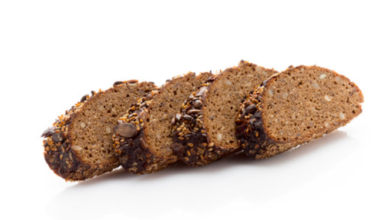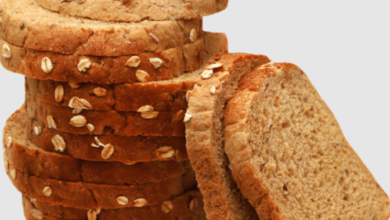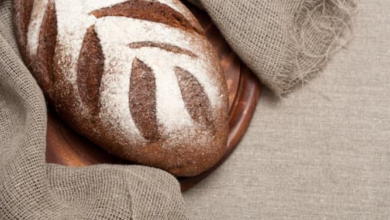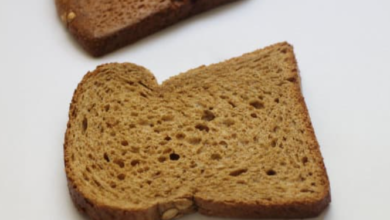What does rye bread taste like? Here’s what you need to know
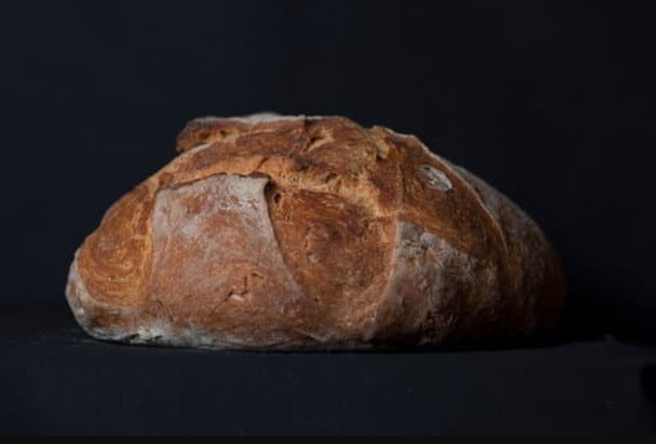
What To Know
- Its unique taste stems from a combination of factors, including the type of rye flour used, the fermentation process, and the addition of other ingredients.
- Whether enjoyed as a simple slice or paired with a variety of flavors, rye bread offers a taste experience that is both distinctive and unforgettable.
- Pumpernickel bread is a type of rye bread made with a higher proportion of dark rye flour and a longer fermentation time, resulting in a darker color and a more pronounced sourness.
Rye bread, a culinary staple with a distinct and captivating flavor profile, has tantalized taste buds for centuries. Its unique taste stems from a combination of factors, including the type of rye flour used, the fermentation process, and the addition of other ingredients.
The Influence of Rye Flour
Rye flour, the cornerstone of rye bread, imparts a characteristic tangy and slightly sour flavor. This distinctness arises from the presence of higher levels of pentosans, a type of soluble fiber, and lower levels of gluten proteins compared to wheat flour.
The Art of Fermentation
The fermentation process plays a crucial role in shaping the taste of rye bread. During fermentation, wild yeast and bacteria consume the sugars in the flour, producing lactic acid and other compounds that contribute to its characteristic sourness. The longer the fermentation time, the more pronounced the sourness becomes.
Variations in Taste
The taste of rye bread can vary widely depending on the type of rye flour used.
- Light Rye Flour: Made from the endosperm of rye kernels, light rye flour produces bread with a milder, less sour flavor.
- Medium Rye Flour: A blend of endosperm and bran, medium rye flour imparts a more robust and slightly bitter taste to the bread.
- Dark Rye Flour: Ground from the entire rye kernel, dark rye flour yields bread with a pronounced sourness and a deep, earthy flavor.
The Role of Other Ingredients
In addition to rye flour and fermentation, other ingredients can influence the taste of rye bread.
- Caraway Seeds: These aromatic seeds add a distinctive nutty and slightly sweet flavor to the bread.
- Molasses: Molasses lends a subtle sweetness and a hint of bitterness to the bread.
- Honey: Honey imparts a delicate sweetness and a floral aroma to the bread.
Exploring the Sensory Spectrum
The taste of rye bread can be described as:
- Tangy: The lactic acid produced during fermentation gives rye bread its characteristic sourness.
- Earthy: Dark rye flour contributes a deep, earthy flavor to the bread.
- Nutty: Caraway seeds add a nutty and slightly sweet flavor to the bread.
- Sweet: Molasses and honey can add a subtle sweetness to the bread.
- Sour: The longer the fermentation time, the more pronounced the sourness of the bread becomes.
Pairing Rye Bread with Different Flavors
The versatility of rye bread‘s taste allows it to pair well with a wide range of flavors.
- Sweet: Rye bread can balance the sweetness of fruits, such as apples, pears, and berries.
- Savory: Rye bread complements the savory flavors of cheese, meat, and fish.
- Spicy: The tangy flavor of rye bread can cut through the heat of spicy dishes, such as curries and chili.
The Nutritional Benefits of Rye Bread
Beyond its captivating flavor, rye bread offers a range of nutritional benefits.
- High in Fiber: Rye bread is rich in both soluble and insoluble fiber, which promotes digestive health and satiety.
- Good Source of Vitamins and Minerals: Rye bread contains essential vitamins and minerals, including B vitamins, iron, and magnesium.
- May Lower Cholesterol: The soluble fiber in rye bread may help lower cholesterol levels by binding to bile acids and preventing their reabsorption.
Embracing the Rye Bread Experience
Exploring the nuanced flavors of rye bread is a culinary adventure that delights the senses and nourishes the body. Whether enjoyed as a simple slice or paired with a variety of flavors, rye bread offers a taste experience that is both distinctive and unforgettable.
Final Thoughts
The taste of rye bread is a symphony of tangy, earthy, nutty, sweet, and sour notes that has captivated taste buds for generations. Its versatility allows it to pair well with a wide range of flavors, making it a culinary chameleon that can elevate any meal.
Frequently Asked Questions
Q: How can I make rye bread less sour?
A: Using light rye flour and shortening the fermentation time can reduce the sourness of rye bread.
Q: What is the difference between rye bread and pumpernickel bread?
A: Pumpernickel bread is a type of rye bread made with a higher proportion of dark rye flour and a longer fermentation time, resulting in a darker color and a more pronounced sourness.
Q: Is rye bread healthy?
A: Yes, rye bread is a nutritious choice due to its high fiber content, vitamins, and minerals. It may also help lower cholesterol levels.
